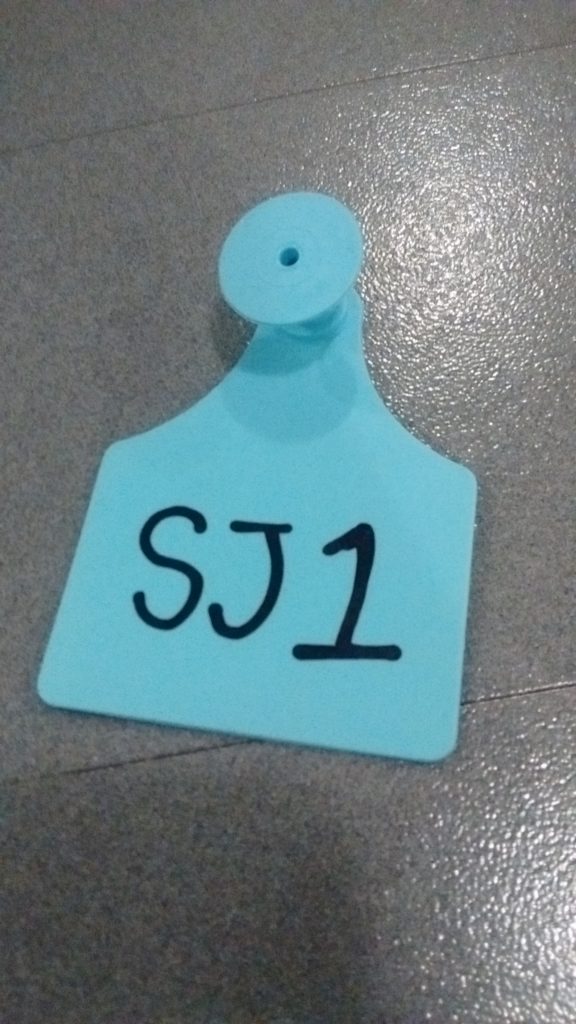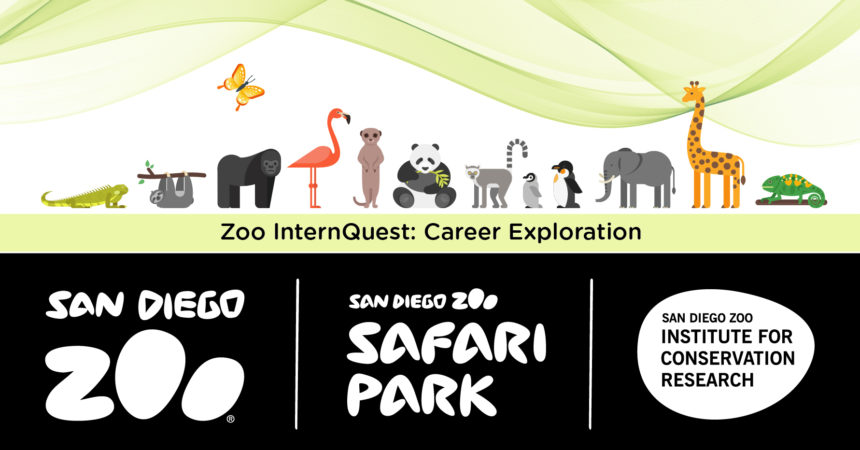Zoo Internquest is a seven-week career exploration program for San Diego County high school juniors and seniors. Students have the unique opportunity to meet professionals working for the San Diego Zoo, Safari Park, and Institute for Conservation Research, learn about their jobs, and then blog about their experience online. Follow their adventures here on the Zoo’s website!
Ever wondered about what kind of people are responsible for monitoring the animals at the Zoo and collecting information for conservation purposes? Or the different conservation programs that the San Diego Zoo participates in around the globe? This week, interns were lucky enough to meet with Jennifer Tobey, a Researcher for the San Diego Zoo’s Global Institute of Conservation Research who is a part of the Population Sustainability team. Ms. Tobey’s work involves animal behavior observation including mating behavior, daily routines, diets, and communication. Ms. Tobey first began working at the zoo 21 years ago as a Zoo Keeper, and five years after her start at the Zoo, she became a Researcher. For a majority of her time working as a Researcher, Ms. Tobey has been mostly working with koalas and has been heavily involved in studies surveying the different koala populations found throughout Australia. Ms. Tobey earned her joint bachelor’s degree in biology and psychology as well as a minor in anthropology from Franklin and Marshall College and earned her master’s in psychology at California State University, San Marcos.
The San Diego Zoo has one of the biggest populations of koalas outside of Australia and is also heavily involved in conservational projects including the Blue Mountains Koala Project, which focuses on Koala population in Australia’s Blue Mountain National Park. Apart from being a National Park, the Blue Mountains are also a World Heritage Site due to the enormous variety in eucalyptus species found there, which is important as Koalas can be picky eaters. In addition to conservation efforts, locals living within the Blue Mountains have been clearing away the orchards that once covered the area, in favor of giving the fauna more room to grow. Not only are the Blue Mountains home to one of the most diverse populations of eucalyptuses in the world, but the koalas living there are some of the biggest and live at some of the highest altitudes of any koala population. The bigger size of the Koalas within the Blue Mountains, as Ms. Tobey explained, is due to the fact that the further south you go in Australia, the colder it gets so Koala populations in southern Australia have gotten bigger and fluffier to stay warm when compared to their northern counterparts.

Ms. Tobey herself has had quite a lot of involvement in population studies in Australia, including the Blue Mountains Koala Project. As Ms. Tobey explained tagging Koalas for a population study can sometimes be tricky, or even very difficult for a multitude of reasons. First of all, finding Koalas can be quite challenging as they may be high up in a eucalyptus branches hidden from view and even if they find one, getting a Koala down can sometimes be difficult. Since no anesthesia is used when tagging the Koalas, researchers have to use a net on a pole to push the Koalas down the tree. Once the koala is down the tree, weight, length, height other measurements will be taken, after which it will be tagged in order to make sure that they don’t count the same individual. For the longest period of time, researchers used tracking collars when tagging koalas, but due to recent advances in technology, these trackers have gotten much smaller. Instead of being a large collar that goes around the koala’s neck, while these new tags are attached to their ear and are much less invasive.
Research conduct at the Zoo on Koalas, and the efforts put into programs such as the Blue Mountains Koala Program, has allowed for more worldwide action being taken towards carefully managing the different koala populations in Australia. The decades of behavioral analysis conducted by researchers, such as Ms. Tobey, has created one of the biggest data bases for koala behavior on the planet and is used by koala researchers all over the world. The work conducted by researchers such as Ms. Tobey has provided a valuable resource for the people involved in koala conservation.
Mael, Real World Team
Week Three, Winter Session 2019


